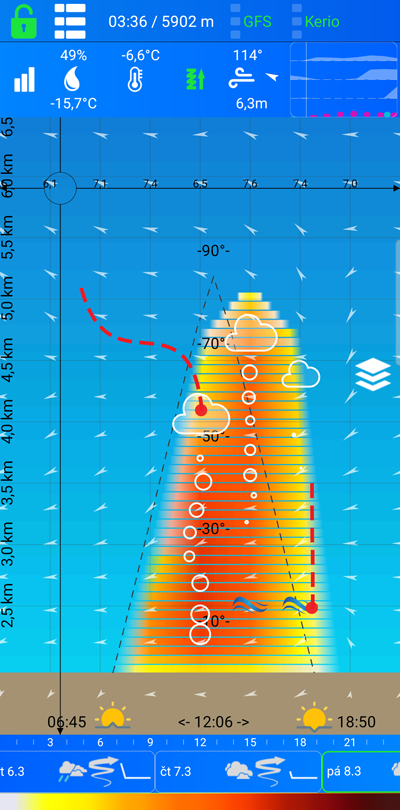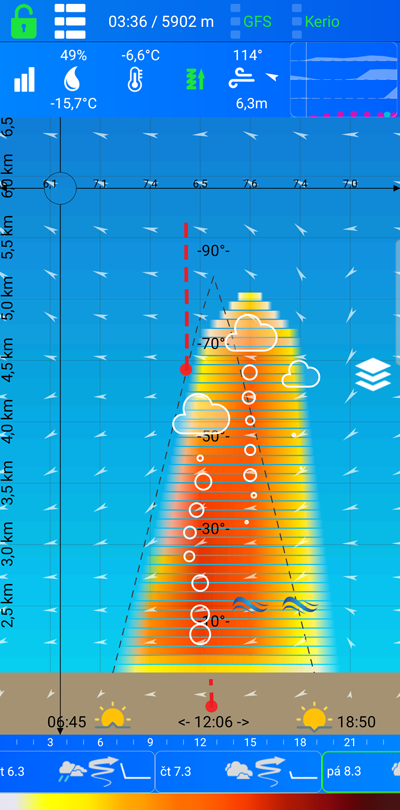Now also free widgets


Convective cloudiness and animation of thermal bubbles.
It is displayed when there is a probability that convective thermal cloudiness will form.
The size of the cloud and the animation correspond to the lifespan estimated for the cloud and its development and disappearance. However, the user must take other influences into account. Top cloud cover, length of day, rain, etc. We adjust the algorithms based on experience and comparison with reality.
If low-level cloudiness is forecasted, then this graphic element is not displayed. You can enable or disable the animation in the settings.
The bubbles can be animated and indicate the strength and length of the upward moisture current for cloud formation.
Bumpiness of thermals.
We try to predict when the thermals will be more or less turbulent. A thermal lift where the symbol for bumpiness is drawn may indicate that part of the lift may be accompanied by uncomfortable thermals. We adjust the algorithms based on experience and comparison with reality.
Thermals are upward currents of warm air that form on the ground surface due to the uneven heating of different types of terrain, such as fields, forests, bodies of water, or artificial surfaces. For paragliders, thermals represent a key element allowing for extended flights. Thermal currents, resulting from the uneven heating of the Earth's surface by the sun, can vary in intensity and reach different heights. The strength of the thermal is determined by the rate of rising air, which can affect the climb rate of the paraglider. The height of the thermal determines how high a paraglider can ascend in the thermal, which is crucial for long-distance flights and achieving optimal routes. In strong thermals, paragliders may experience sudden ascents, but also turbulence, which requires good glider control and the ability to correctly read conditions for a safe flight.
